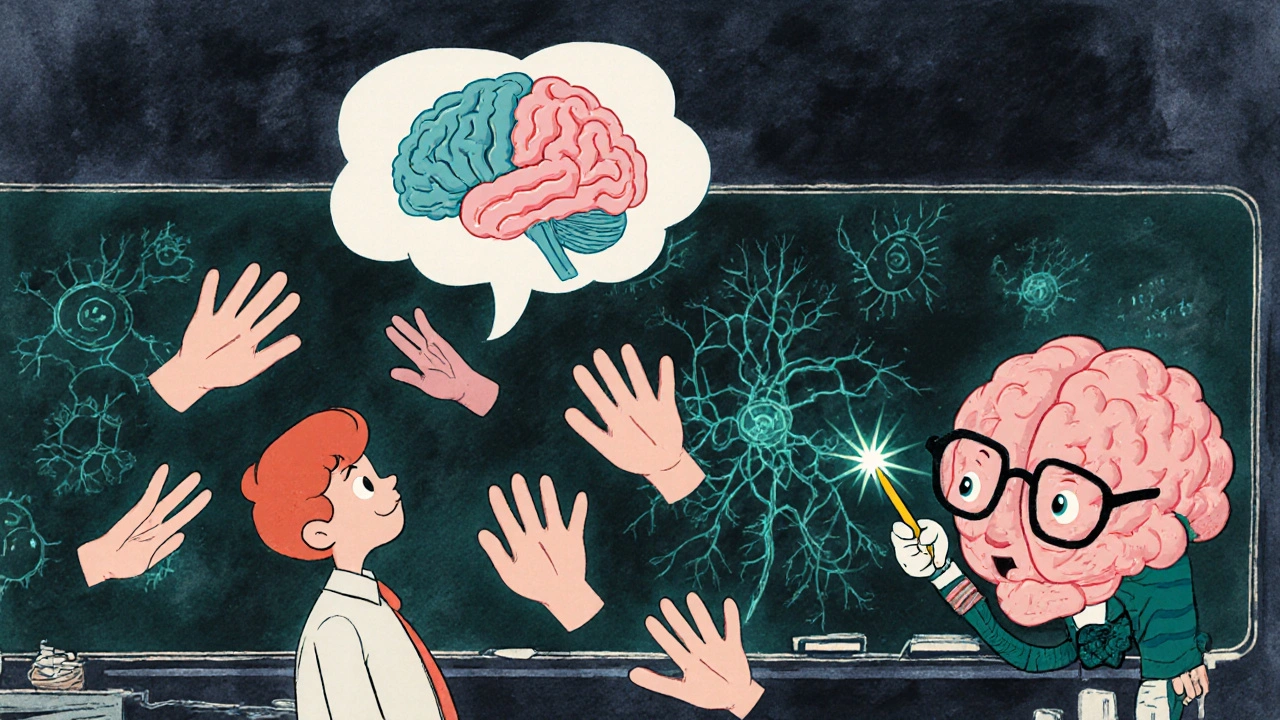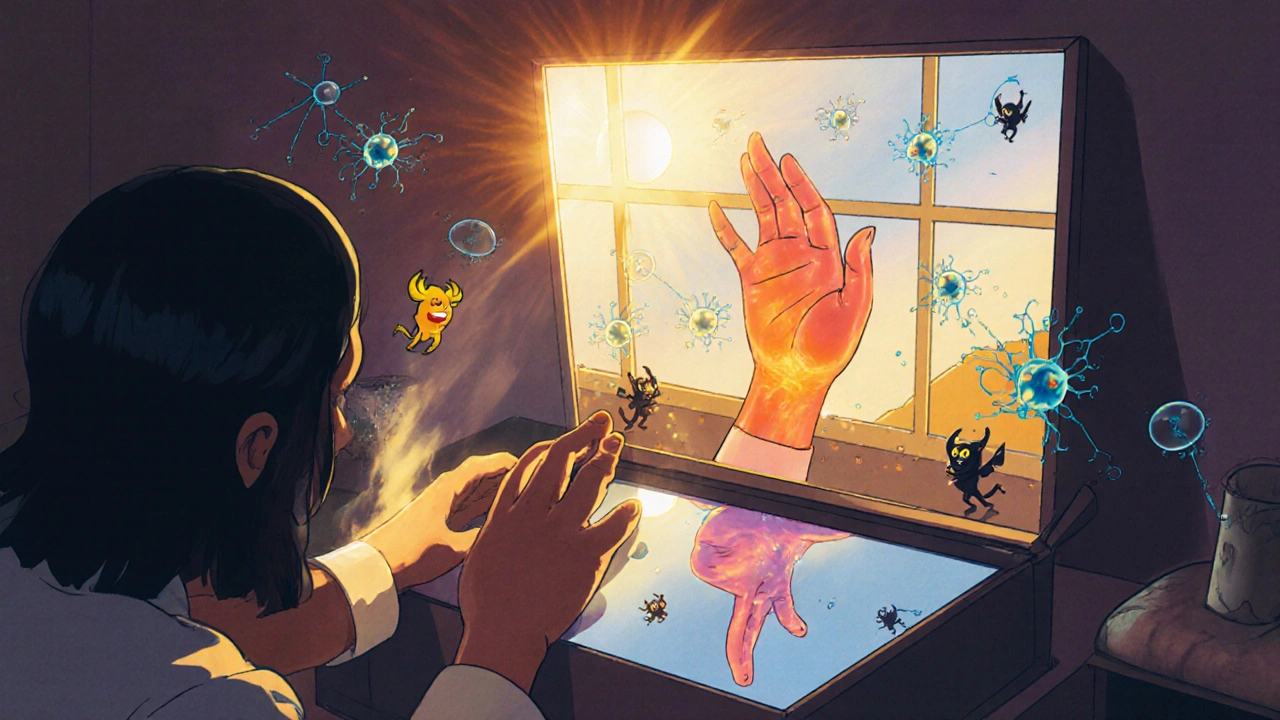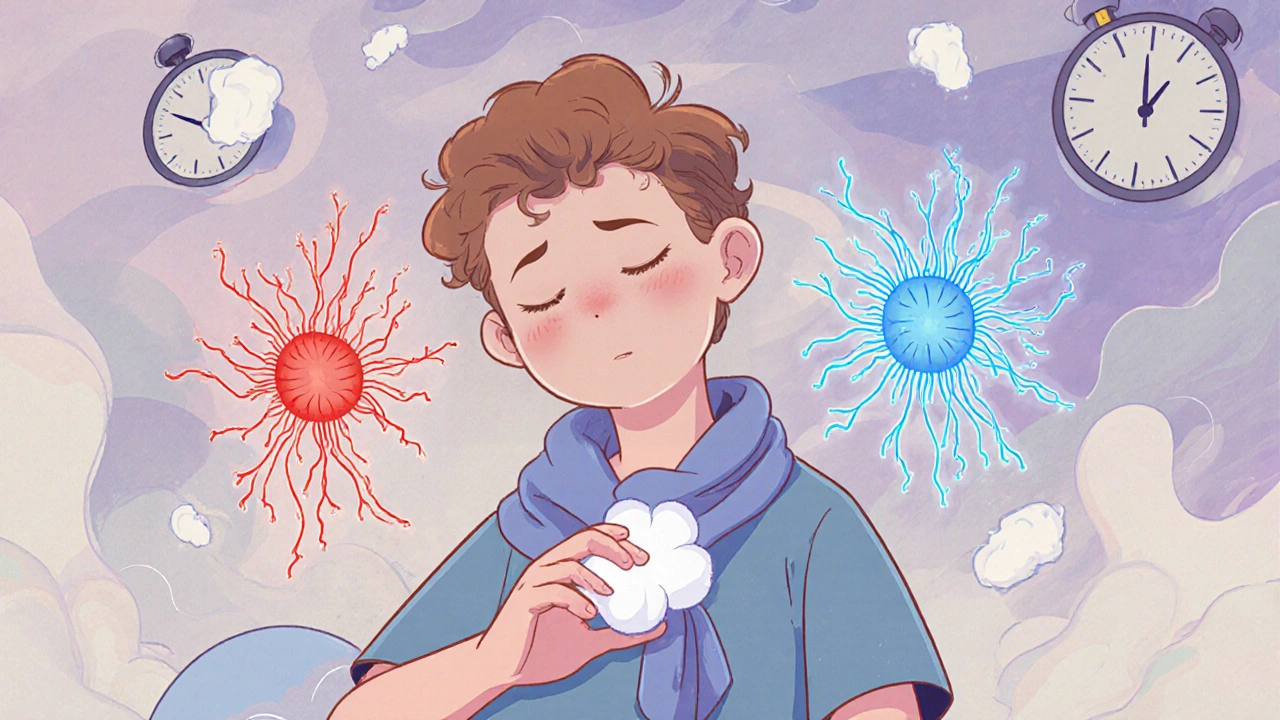Complex Regional Pain Syndrome (CRPS) doesn’t just hurt-it rewires your brain. If you’ve been living with CRPS, you know it’s not just about the injury that started it. It’s about the burning, tingling, or stabbing pain that refuses to go away, even after your skin has healed. Your body’s alarm system got stuck. And no amount of painkillers can reset it. That’s where desensitization and graded motor imagery come in-two science-backed, non-drug approaches that actually retrain your nervous system to stop screaming danger.
What CRPS Really Is (And Why Pills Don’t Fix It)
CRPS isn’t a muscle strain or a sprain that won’t heal. It’s a nervous system malfunction. One moment, you have a broken wrist, a surgery, or even a minor cut. The next, your hand feels like it’s on fire, swells for no reason, and even a light breeze or a sock touching your skin feels unbearable. This isn’t in your head. Brain scans show real changes-areas that once controlled your hand now overlap with regions that process pain. Your brain starts misreading normal touch as a threat.
Traditional pain meds? They often fail. Opioids don’t target the root problem. Anti-inflammatories won’t calm the rewired nerves. That’s why the National Institute for Health and Care Excellence (NICE) and other top medical bodies now say: if you’ve had CRPS for less than a year, start with movement-based rehab-not more pills.
Desensitization: Teaching Your Skin It’s Safe Again
Imagine your skin has become hypersensitive-like a microphone turned up to 11. Desensitization is about turning it back down, slowly and safely. It starts with something so gentle it barely feels like touch: a cotton ball, a silk scarf, or a feather. You don’t press hard. You don’t rub. You just let it rest on your skin for a few seconds.
At first, this might trigger pain. That’s normal. But over time, your brain learns: “This isn’t danger. This is just fabric.” The goal isn’t to push through pain-it’s to stay under a pain level of 3 out of 10. If it hits 4 or higher, you back off. Progress isn’t about speed. It’s about consistency.
Here’s how it usually unfolds:
- Weeks 1-2: Light touch with soft materials (cotton, silk) for 5-10 minutes, 3-5 times a day. Eyes open. No movement.
- Weeks 3-4: Add gentle movement while touching-slowly wiggle your fingers as the cotton brushes your skin.
- Weeks 5-8: Introduce temperature. Cool washcloths, then warm ones. Still no pressure.
- Week 8+: Move to fabrics you avoid-denim, socks, gloves. Eventually, normal daily contact.
Studies show that after 8-12 weeks of this, patients see a 30-40% drop in brain activity linked to pain. One 2021 trial found people using desensitization improved 42% more on daily function tests than those who didn’t. It’s not magic. It’s neuroplasticity-your brain rewiring itself through repeated, safe exposure.
Graded Motor Imagery: Rewiring Your Brain Without Moving
Now, here’s the part that sounds strange-but works: you don’t move your hand. Not yet.
Graded Motor Imagery (GMI) is a three-step process designed to fix the “cortical smudging” in your brain. When CRPS develops, the area of your brain that maps your painful limb gets blurry. Neighboring areas take over. Your brain forgets what your hand is supposed to look like or how it moves.
Stage 1: Left/Right Discrimination
You look at pictures of hands-some left, some right-and you click or say which is which. No moving. Just identifying. You start with 50 images a day. Your goal? 90% accuracy in under 1.5 seconds per image. Apps like Recognise Online make this easy. At first, you’ll get it wrong. You’ll feel frustrated. That’s okay. Your brain is relearning.
Stage 2: Motor Imagery
Now, you imagine moving your hand. Not actually moving it-just picturing it in your mind. You visualize picking up a cup, turning a doorknob, typing on a keyboard. You do this for 5-10 minutes a day, eyes closed. No pain. No strain. Just quiet mental rehearsal. If imagining causes pain, you stop. You don’t push. You wait. This stage trains your brain to associate movement with safety, not danger.
Stage 3: Mirror Therapy
Finally, you use a mirror. Place your unaffected hand on one side. Your painful hand behind the mirror, hidden. You move the healthy hand while watching its reflection. Your brain sees movement and assumes the painful side is moving too. It starts to rewire the map. Sessions start at 5 minutes, build to 20-30 minutes daily over 6-12 weeks.
Dr. G. Lorimer Moseley’s 2006 study found 70% of CRPS patients had over 50% pain reduction after just 4 weeks of GMI. Brain scans confirmed: the blurred areas in their somatosensory cortex returned to normal size. Another study showed two-point discrimination-the ability to tell if one or two fingers are being touched-improved from 15mm apart to under 7mm after GMI. That’s the difference between feeling a single touch and feeling like your skin is crawling.

Why GMI Beats Traditional Therapy
Most physical therapy for CRPS focuses on stretching, strengthening, and range-of-motion. That’s important-but only after your brain stops seeing movement as a threat. If you try to force your hand to move before your brain is ready, you’ll just reinforce fear. That’s why traditional therapy alone often only reduces pain by 1.5 points on a 10-point scale.
GMI? It knocks off 2.8 points on average-more than double. A 2023 review of 33 studies found GMI was far more effective than standard rehab for both pain and function. And when you combine GMI with desensitization and cognitive behavioral therapy, pain drops by over 5 points on average. That’s the difference between being trapped in pain and being able to hold a coffee cup again.
Who It Works For (And Who Needs to Be Careful)
GMI and desensitization work best when started early-within the first 3 to 6 months after symptoms begin. The Cleveland Clinic found 83% success rates when therapy started early. After a year? Success drops to 42%.
But it’s not for everyone. People with severe dementia (MMSE score under 24) or major vision problems may struggle with the left/right discrimination or mirror therapy. And here’s the catch: if done wrong, it can make things worse.
Therapists who rush the stages-pushing patients to move too soon, or increasing exposure too fast-can trigger flare-ups. One study found 15% of patients worsened because their therapist advanced too quickly. That’s why the American Physical Therapy Association now requires therapists to have at least 40 hours of specialized CRPS training before offering GMI. Look for someone with CHT (Certified Hand Therapist) or CPP (Certified Pain Practitioner) credentials.

Real People, Real Results
On Reddit, a user named PainWarrior2020 wrote: “After 3 months of GMI, my hand warmed up from 82°F to 96°F. I wore socks again for the first time in 18 months.”
Another YouTube creator, CRPS Warrior, shared: “Weeks 1-2 were brutal. Pain spiked 30%. But by week 6, I picked up a coffee cup without my brain screaming.”
But it’s not all easy wins. About one-third of patients quit because the early stages feel pointless or painful. Desensitization takes an average of 47 days just to go from cotton to wearing a shirt. That’s a lot of patience.
Still, in a 2023 survey of 1,200 CRPS patients, 68% said GMI gave them meaningful relief. Over 40% cut their pain by half or more.
How to Start
Don’t try this alone. Find a therapist trained in CRPS rehab. Ask if they use the NOI Group’s GMI protocol or follow NICE guidelines. If you’re in the UK, the NHS now requires access to GMI within 4 weeks of referral.
At home:
- Buy a mirror box (under £20 online) or make one with a shoebox and a mirror.
- Download Recognise Online or use free left/right hand flashcards.
- Keep a pain journal: note what you did, your pain level before and after, and how you felt emotionally.
- Stick to the schedule. Even 10 minutes a day matters more than 60 minutes once a week.
And remember: this isn’t about “getting better fast.” It’s about rewiring your brain. That takes time. But if you stick with it, your pain won’t just fade-it’ll lose its power.
What’s Next for CRPS Rehab?
Technology is helping. Apps like Miro Therapeutics, FDA-cleared in 2022, use AI to guide GMI progression and track your pain patterns. Telehealth has made access better-67% of rural patients in one study improved with virtual therapy.
The future? More personalized rehab. More digital tools. More awareness. But the core hasn’t changed: your brain can heal. Your nervous system can reset. You just need the right tools-and the patience to use them.
